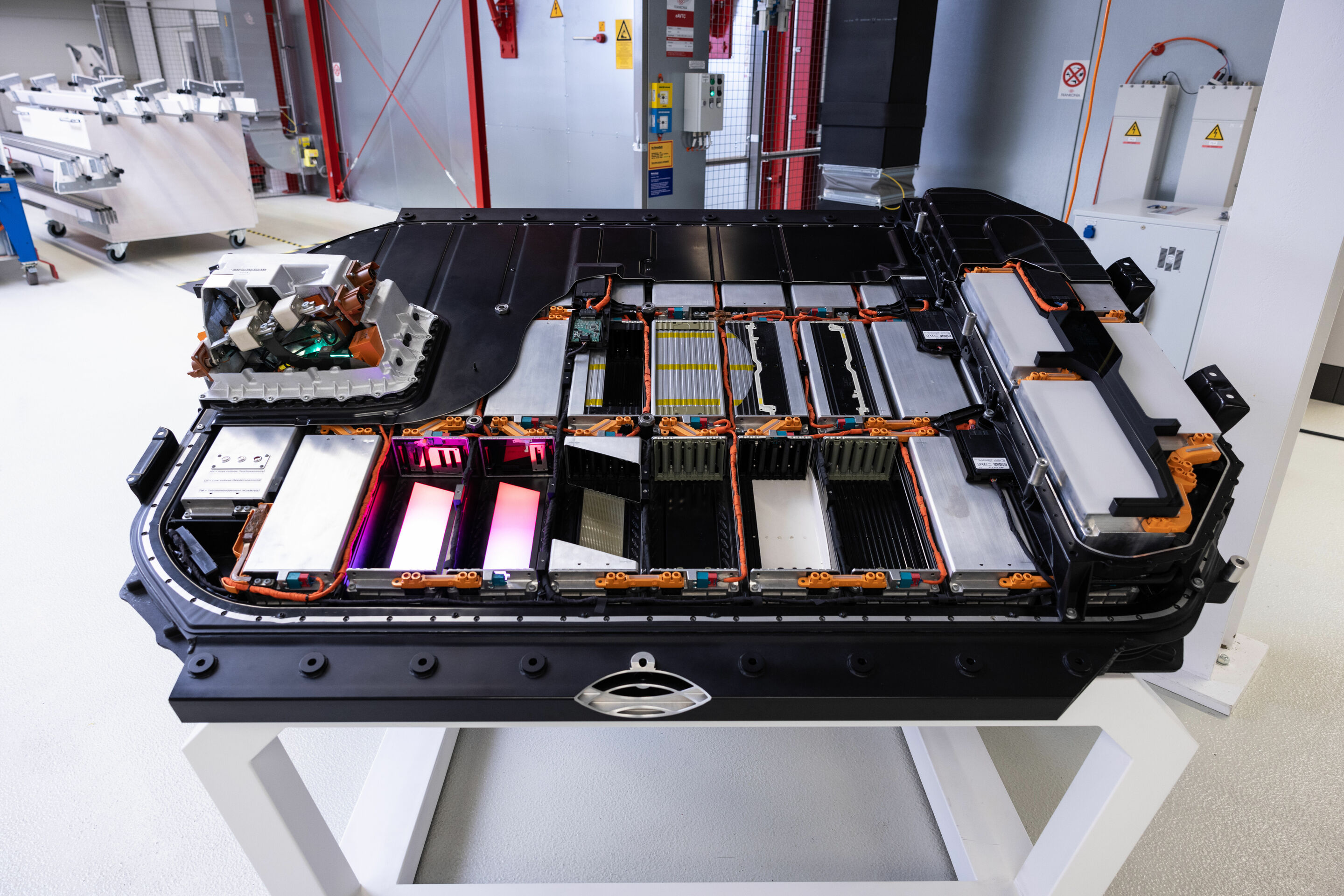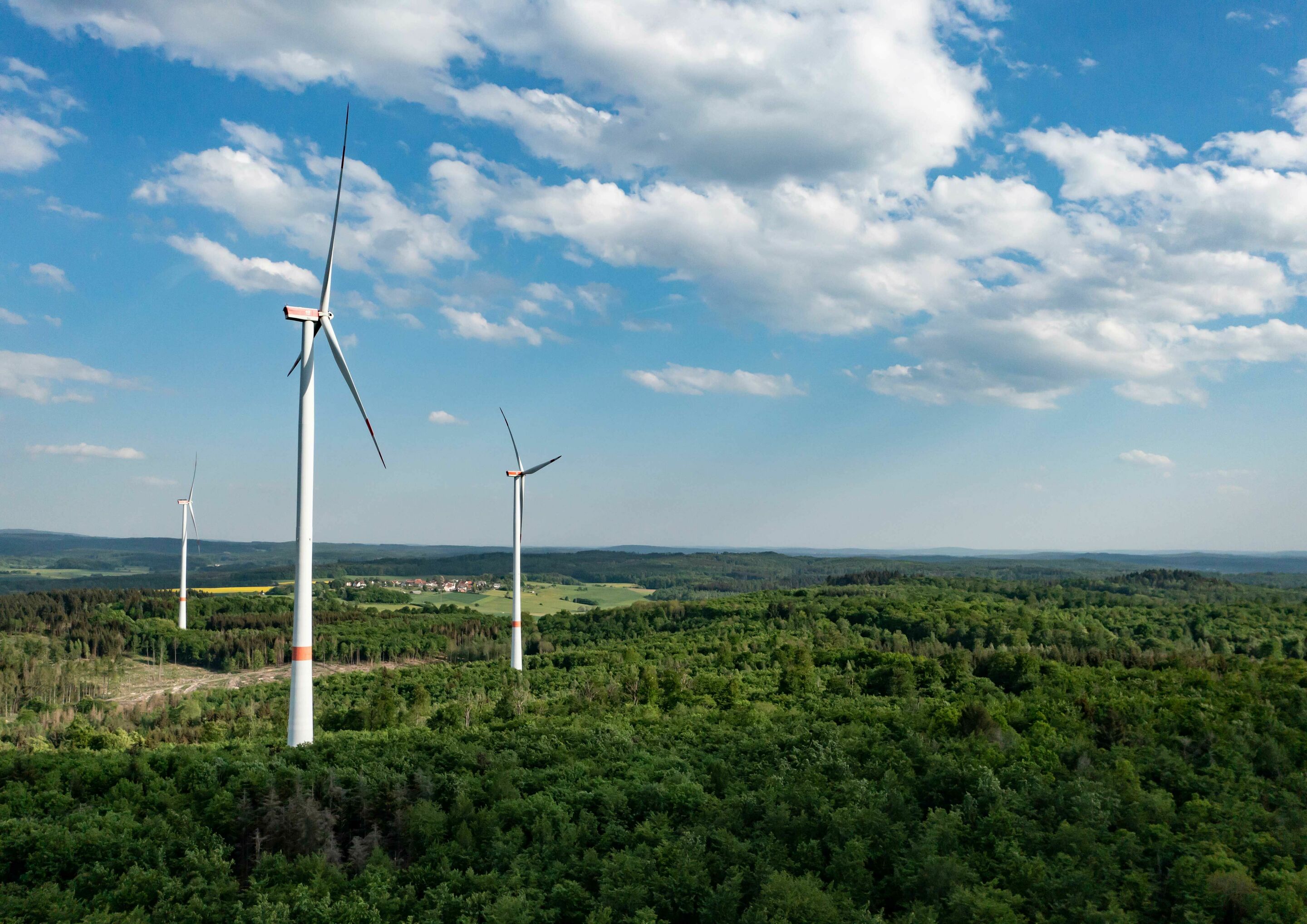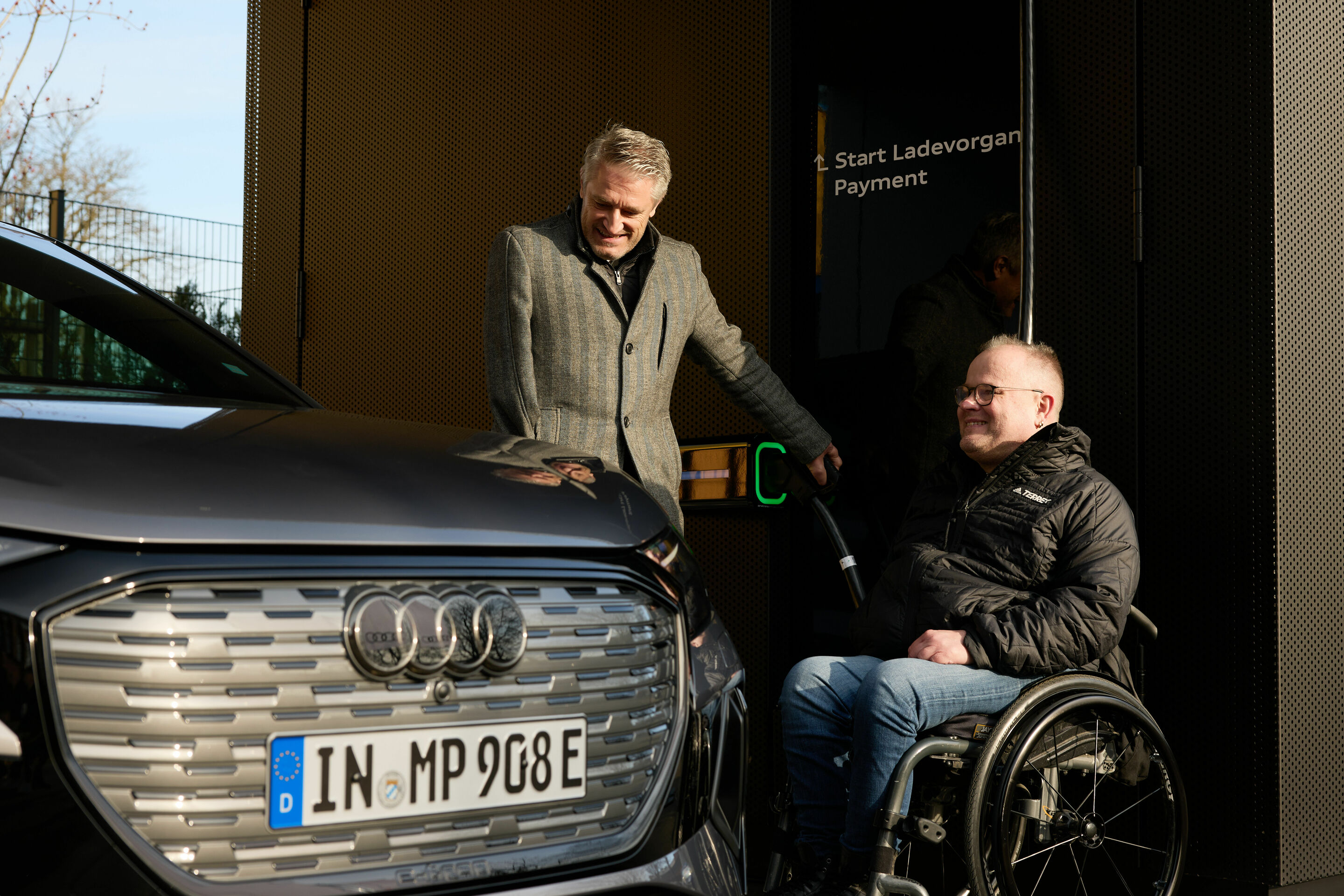Charging technology and infrastructure
Simple charging makes all the difference
- Convenient for everyday use: Efficient, straightforward, and affordable charging for Audi drivers
- A holistic framework: The proper infrastructure, competitive prices, and a strong network of partners – the brand takes a multi-pronged approach to making charging a premium experience
- Environmentally friendly: Audi is committed to continually expanding its renewable energy offering for customers – at home, in the city, or on vacation
- Fast: Audi is introducing more models with 800-volt battery architecture, enabling a DC charging performance of up to 270 kW under ideal conditions
The success of electric mobility depends on three factors: an attractive model range, an extensive charging infrastructure with charging options catering to a wide range of customer preferences, and the availability of green power for charging. Audi is, therefore, driving forward the expansion of its electric portfolio and is committed to expanding a sustainable ecosystem for electric mobility. Together with partner companies from the Volkswagen Group and beyond, the company offers its customers attractive charging options – at home and on the road.
Charging – easy, simple, and affordable
With Audi charging, the premium brand offers customers a convenient charging service that eliminates the need to compare different prices and plans. The service offers three plans – Basic, Plus, and Pro – allowing drivers to choose the one that best suits their individual needs. The Basic plan has no base fee and charges only for actual consumption. The Plus plan is designed for occasional users of public charging stations and includes a small base fee and discounted charging prices. The Pro plan is designed for frequent users of public charging stations and provides access to the Selected Partner Network. The Pro plan features the lowest charging price with a slightly higher base fee.
Drivers book their plans monthly, giving them the flexibility to switch plans if their driving profile changes. With just a few clicks, they can sign up and change their contracts in the myAudi app. Audi charging offers access to more than 600,000 public charging points in over 29 European countries and will be expanded in the future. Authentication at the charging station is done via an RFID card, the myAudi app, or, in vehicles that support this service, via Plug & Charge.
Audi charging includes access to charging members in the Selected Partner Network, which was founded to create the best possible charging experience for users. The partners provide high charging power of at least 150 kW. Audi drivers who sign up for the Pro plan also benefit from discounted pricing. The Audi charging offers apply to both long- and short-distance driving.
INFOBOX
Pro plan customers can access providers in the Selectes Partner Network:
- Aral pulse with HPC stations across Germany
- Audi charging hubs
- Ewiva with HPC stations across Italy
- Ionity with HPC stations in 24 European countries
- Zunder
Charging points – available everywhere, always nearby
Ionity has specialized its charging network along Europe’s main roadways. The joint venture, in which the Volkswagen Group has a stake through its Porsche and Audi brands, is active in 29 European countries. Ionity plans to increase the number of high-power 350 kW charging points from 1,500 to around 7,000 by 2025. Moreover, Ionity is now building its fast-charging stations near major cities and busy main roads as well as along freeways. As a result, the number of charging locations will increase from just under 400 to over 1,000. Ionity also plans to expand many of its existing stations – depending on how heavily customers use them. It will now design all new sites with six to twelve charging points from the beginning. Ionity only uses green power for its HPC stations.
Audi has its own charging hubs for charging in urban areas. In 2021, the company opened a pilot site in Nuremberg. Each fast-charging station boasts six charging points where cars can charge with up to 320 kW. Audi uses second-life batteries from its test vehicles as buffer storage units. The units charge when the charging points are not in use – especially during times when electricity prices are lower, such as in the morning hours. This grid-friendly charging concept helps ensure even grid utilization, eliminating the need for a complex infrastructure with high-voltage power lines and expensive transformers. A supply of 200 kW of grid power is sufficient to keep the 2.45 MWh battery storage system supplied with power at the pilot site in Nuremberg. With a green power contract in place, the Audi charging hub only uses energy from sustainable resources. Solar panels provide additional green energy. The technology and modular design of the buildings not only make it easier to select possible locations, they also reduce the time required for planning, which cuts costs and conserves resources.
Cities like Berlin, Salzburg, Munich, Frankfurt am Main, and Bremen now have premium fast-charging stations. Each station has four charging points and also welcomes drivers of other brands. However, Audi drivers benefit exclusively from a free reservation feature using the myAudi app. The pilot site in Nuremberg also has a lounge where users can relax, do some mobile work, or enjoy a snack. A concierge is on-site to assist. Customers at other Audi charging hubs can reach the concierge by phone; Audi cooperates with different partners here. The first Audi charging hub outside Europe has now opened in Japan’s capital city, the Tokyo Metropolis.
The Audi charging hub is aimed specifically at people in urban areas who do not have a home charging option. Over 60 percent of users are regular customers.
Audi customers can use the green power solutions offered by Volkswagen subsidiary Elli for home charging. As a first step, trading partners put interested customers in touch with a professional electrician who assesses the situation on-site and provides tips on integrating the existing infrastructure and a home photovoltaic system. The e-tron charging system compact and connect, along with Audi wall boxes, are available. There is also a solution for drivers of company cars: The partner company LOGPAY transmits the charging data to the fleet management system, and the costs are later reimbursed through the company’s billing system. The solution requires a Charge & Fuel card and the Audi Wallbox Pro1.
Smart and efficient charging
An ideal charging experience needs more than just the right vehicle and infrastructure. How long it takes for an electric car to charge also depends on the maximum charging speed and the battery size of the model, as well as a range of external factors such as ambient temperature, the use of other country-specific plugs, and the use of the preconditioning feature (for example remote-controlled air conditioning of the vehicle). The e-tron route planner shows the driver the ideal route; when the driver follows the recommendations, the system ensures that the car battery has the right temperature when the driver arrives at the charging point. The ideal battery charge level is between 20 and 80 percent.
Fast and high-capacity charging
Charging speed is also greatly influenced by the characteristics of the high-voltage battery (HV). While developing the Premium Platform Electric (PPE), which features for the first time in the Audi Q6 e-tron series, Audi focused on range and charging performance.
Sophisticated HV battery thermal management, the 800-volt electrical system, and a wide range of efficiency measures in the new electric motors reduce the charging time while significantly improving charging performance.
The Audi Q6 SUV e-tron is setting standards. With a state of charge (SoC) of up to ten percent, ten minutes at a fast-charging station with a maximum charging power of 270 kW are sufficient to generate a range of up to 255 kilometers under ideal conditions. This value is based on the 800-volt architecture, the new preconditioned HV battery, and the new predictive thermal management system in the PPE. The HV battery in the Audi Q6 e-tron series is equipped with twelve modules and has a gross storage capacity of 100 kWh (net 94.9 kWh).
Technology made by Audi
Cell chemistry, charging power, and control systems are mainly responsible for the characteristics of electric car batteries, which differentiate one battery from another. Battery development is, therefore, a top priority at Audi.
Audi’s battery testing center in Gaimersheim, 7 km northwest of its headquarters in Ingolstadt, ensures an ideal balance between energy density and charging capacity in the battery cells used in the e-tron models. The cell technology experts there are working to strike the perfect balance between energy density, charging time, durability, and safety. Generally, the higher the energy density, the longer it takes to charge. So customers can enjoy the shortest possible charging time, Audi is focusing on developing a control system that enables constant fast charging despite the high energy density.
Each vehicle project entails a variety of service life and fast charging tests on several hundred cells. The cells must run through various charging and load profiles that the technicians perform in climatic chambers at temperatures between -30 and +60 °C. To assess the cells’ aging phenomena, they are exposed to high temperatures for around a year, allowing Audi to simulate an in-car service life of up to 15 years. Service life test stands in Gaimersheim also enable the technicians to speed up reconstructed mileage scenarios of about 300,000 kilometers. Other tests include crash and overcharge testing, as well as various safety tests. As such, the battery cells meet the highest service life and safety standards – decisive criteria for sustainable use.
The first Audi battery assembly facility began operation at the Brussels site in 2018 with the launch of the first electric car from Audi, the e-tron. The battery assembly facility in Ingolstadt went into operation with the start of production of the Audi Q6 e-tron series.
The Audi site in Győr, Hungary, is also electric and is the world’s largest engine manufacturing plant. Audi Hungaria builds the drive systems for the PPE and makes stators and transmission parts. It also assembles the axles for the PPE, which are then transported by rail to Ingolstadt. Product testing also takes place in Győr.
Audi promotes the expansion of renewable energies in Europe
Audi and the other Volkswagen Group brands cooperate with energy suppliers to promote the expansion of renewable energies. With the help of various partner companies, new wind and solar farms will be built in several European countries by the end of 2025, generating around five terawatt hours of additional green power. This figure corresponds to an installed capacity of about 250 new wind turbines.
Audi plans to increase the share of electricity its partners generate from renewable sources in conjunction with an additional increase in the share of electric cars on the road. The partnership with energy suppliers also intends to cover charging processes that aren’t yet carried out with green power today. In this way, Audi is actively involved in ensuring that its customers are on the move with green energy in the future.
The symbiosis between electric mobility and renewable energies
Audi has been electrifying Berlin since 2019. Like the Audi charging hub, the multi-use storage system on Berlin’s EUREF Campus, with its capacity of 1.9 MWh, uses second-life lithium-ion from Audi development vehicles. In researching intelligent networking to promote the energy revolution, the site acts as a real-world laboratory by testing various interaction scenarios between electric cars and the energy grid. With a mere 20 second-life batteries, the EUREF storage system already meets 0.1 percent of Germany’s frequency stabilization needs.
Audi identifies the greatest energy-economy potential in controlled charging at surplus times, i.e., periods when the grid has a surplus of renewable energy. As part of an ongoing research trial in Berlin, 18 virtual vehicles that drive for three hours and stand unused for 21 hours during a simulated day are charged intelligently using actual electricity transactions on the power exchange.
The final vision is to achieve a symbiosis between electric cars and the power grid. Experts from Audi demonstrated that in a scenario where renewable energies and e-mobility achieve 100% penetration, 90 percent of driving-related energy demand could be covered by surpluses of renewable energies.

As of: March 2025


























